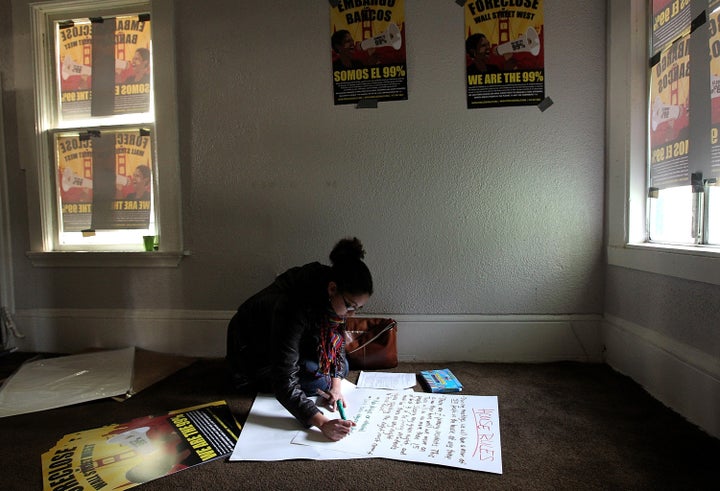
Nearly three-quarters of African-American and Latino mortgage borrowers could be excluded from affordable homeownership if federal regulators approve a proposal to require 20 percent down payments, according to a study released Wednesday.
Co-authored by the UNC Center for Community Capital and the Center for Responsible Lending, the study says that such a move would not only restrict minorities' access to homeownership but also that of roughly 60 percent of all creditworthy borrowers.
The proposal is part of a host of new regulations under consideration through the Dodd-Frank Act, legislation passed in the wake of the financial crisis. Policymakers have been tasked with developing new guidelines for the mortgage market to avoid a repeat of the easy lending environment that led so many Americans to take out bigger mortgages than they could afford -- often with no money down. While no one is asking to return to the days of easy money, the study cautioned that the pendulum might now be swinging too far in the other direction, tightening lending requirements too much. Many housing experts say that 10 percent is a more reasonable down payment requirement. Federal regulators are still working out the proposed policy.
"If you're requiring homebuyers to actually save a 20 percent down payment in advance of buying the home, it would take decades for many families to amass that kind of money even though they could still afford to make those monthly mortgage payments," said Ginna Green, a spokeswoman for the Center for Responsible Lending.
Though borrowers from all walks of life would be impacted by such a policy, minorities would be disproportionately affected because they have, on average, lower incomes than their white counterparts, according to Green. "African-Americans, Latinos, teachers, firefighters, anyone who is working-class and having trouble making headway in this economy will have even more trouble if these guidelines were to come to fruition," Green said. "It's like the pendulum has swung from one side to the other in the housing market. On one end, minorities got the riskiest loans, and now, on the other end, minorities are going to bear the brunt of these onerous down payment requirements."
In the report, the researchers found that increasing down payment requirements does produce a reciprocal decrease in the number of borrowers who default on their mortgage loan. Specifically, for loans that meet the government's proposed guidelines, the default rate was 7.1 percent as compared with rates of nearly 10 percent on loans sold to the Federal Housing Administration, which has a down payment requirement of 3.5 percent. Nonetheless, the researchers concluded that the benefit of lowered default rates -- which, in turn, produce lower foreclosure rates -- is overshadowed by borrowers' restricted access to affordable mortgage loans.
Some prominent economists disagreed with the report's finding, including Dean Baker, co-director for the Center for Economic and Policy Research. "I know of almost no planet where a slight increase in the cost of getting a mortgage will shut out 60 percent of creditworthy borrowers. On my planet, we just had a horrible housing bubble burst and wreck the economy for a decade in large part because banks were able to pass on junk mortgages at no risk. This is an incredibly modest provision that will have no impact on creditworthy borrowers."
Mark Zandi, chief economist at Moody's Analytics, was more moderate in his dissent. "I think a down payment requirement of 20 percent is too high. I'd like to see more like 10 percent," he said.
Nonetheless, Zandi believes the government should determine the requirements. "The very important thing to remember here is that when policymakers figure out what the future of mortgage finance looks like, it's very likely that the government will only be able to play a role with loans that meet these requirements," he said.
"With a 20 percent down payment, only one-third of loans would fall under their guidance," Zandi said. "But if you lower the down payment requirements, the government could oversee closer to two-thirds of the loans, which is where I'd like to see them be."
UPDATE: 5:42 p.m. --
Not all borrowers would be required to make a 20 percent down payment, under the proposal. Rather lenders could still offer loans with lower down payments if the bank held onto at least 5 percent of the credit risk (the dollar calculation of the chance the borrower will not pay back the loan). This is likely to increase the interest rate charged to the borrower.